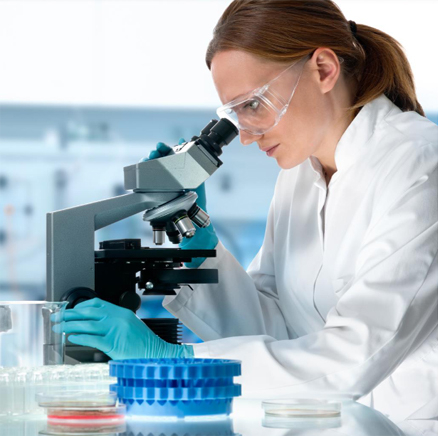Granddaughterς stem cells improve grandparents health with stroke
The Granddaughter Donated Newborn Stem Cells to her Grandfather after a Stroke January 2021
The 60-year-old father suffered a serious stroke in September 2018. According to the World Stroke Organization, 1 in 4 adults over the age of 25 will have a stroke in their lifetime. This year, 13.7 million people worldwide will have their first stroke, and 5.5 million of them will die as a result1. In the United States, someone has a stroke every 40 seconds 2,3. “Dad had a stroke two years ago, and eight hours later, Mom found him at home in the bedroom. He was conscious, but his condition was very serious.” Lucie’s father was taken to a hospital near Brno, Czech Republic, where he received medication to disperse a clot in his carotid artery. The stroke affected her father’s left cerebral hemisphere, causing significant paralysis and sensory disturbances in the right half of his body as well as the speech center. After a month in the hospital, the doctors told the family they could do no more, that it was time for Lucie’s father to go home or enter a long-term care facility. “The doctors subsequently told us that my father would remain mentally handicapped, that he would not know us, that he would not be able to live independently and that he would be bedridden.” recalls Lucie. Lucie did not want her mother’s life to hold nothing but the constant work of taking care of her severely handicapped father. The family arranged for their father to stay for three months in a rehabilitation institute in Kladruby (east of Prague). There, he got up from his bed and began to undergo physical rehabilitation, learning personal hygiene, dressing himself, and eating with his left hand. He also learned to use a wheelchair and to walk again with assistance. "I don't think I would call it an improvement”, Lucie says of the first months of rehabilitation, because she was frustrated that the progress focused on physical skills but not cognitive skills. "He didn't know the colors, he couldn't read, he didn't know the numbers… I definitely wasn't going to put up with it”, adds Lucie. In April 2019, Lucie happened to see a TV show Pošta pro tebe, in which a gentleman talked about his improvement after cell therapy. "It simply came to my notice then. I started looking for, studying what and how umbilical cord and blood cells can be used and what they could improve”, says Lucie. She also contacted stem cell clinics. "I investigated all the risks and I was told that his condition could not worsen after the application of these cells," she adds. Therapy with both umbilical cord blood and umbilical cord tissue Less than a month later, the family took their father to a clinic in Slovakia for therapy with newborn stem cells. Lucie explained, "I chose the clinic because they use neonatal cells derived from umbilical cord blood and umbilical cord for treatment. Logically, it occurs to me that these cells, because they are new and unworn, will probably be better than dad getting his own, which are simply old". The therapy used both hematopoietic stem cells from umbilical cord blood as well as mesenchymal stromal cells from umbilical cord tissue. The cells were administered both by intravenous infusion and by intrathecal injection into the spinal canal. The first course of therapy used cells from an unrelated donor baby. In addition to the cell therapy, Lucie’s father continued to receive physical therapy with professionals. In late 2019, he stayed for a second course of treatment. Τhere the staff remembered him from his stay a year before, and stated that he had made tremendous progress. For example, his walking was improved to the point that he did not need support. Most important for the family, their father’s cognitive skills greatly improved. In his speech therapy, he began to articulate more, and could control his mouth to speak the letters that the speech therapist asked him to pronounce. "I see a shift in routine things he hasn't done before. When his food crumbs fall, he stops eating and starts cleaning up after himself" noted Lucie. The second course of therapy at the end of 2019 came from the patient’s granddaughter. Seeing the improvement from the first therapy, a second therapy was considered to push the progress further. But since Lucie was pregnant in 2019, everyone decided to wait for the birth of the granddaughter so that she could donate her blood and tissue cells to her grandfather. "When we went to Slovakia for the first time, I informed my father that he would have a granddaughter, so he had to try and be motivated to be able to take care of her when she was born. From the first moment I saw the report on TV, I didn't stop believing that my dad wouldn't give up. And when I saw that my dad wanted to fight and wanted to live, I didn't give up and I wanted to have a slightly normal life for him." Lucie advices to other expectant parents: "I think that mothers should find out during pregnancy what can be used for preserved umbilical cord blood. You never know what might happen to your family tomorrow or maybe in 10 years and when you may need cells. If I were pregnant again, I would definitely keep my umbilical cord blood." References World Stroke Organization. Learn About Stroke. Accessed Jan. 2020 Virani SS, Alonso A, Benjamin EJ, et al. On behalf of the American Heart Association Council on Epidemiology and Prevention Statistics Committee and Stroke Statistics Subcommittee. Heart Disease and Stroke Statistics—2020 Update: A Report From the American Heart Association. Circulation 2020; 141(9):e139–e596. CDC. Stroke Facts. Last updated 20200908 Comments Disclaimer To learn more about cord blood banking, visit Parent's Guide to Cord Blood Foundation at https://parentsguidecordblood.org/en/news/granddaughter-donated-newborn-stem-cells-her-grandfather-after-stroke

